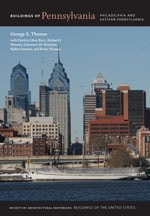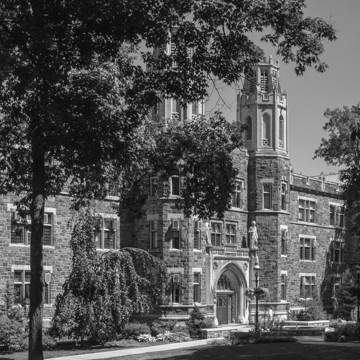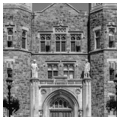Attesting to the university's focus on engineering, this was the most expensive and largest structure yet built at Lehigh, costing $1.2 million and measuring 234 × 170 feet. A mechanical engineering laboratory, machine shop, and teaching facility, it was the gift of James Ward Packard (Class of 1884), founder of the automobile company that bore his name. At the opening ceremonies, Bethlehem Steel president Charles Schwab christened the building the “Crucible of Science.” Built on a sloping site, which gives it its lively form, the building is of steel and concrete, and clad with brown local rubble stone with Collegiate Gothic details in limestone. The Gothic portal contains its own iconography of modern industry, with flanking statues of James Watt and Michael Faraday, and a bust of Packard in the arch above.
You are here
Packard Laboratory
If SAH Archipedia has been useful to you, please consider supporting it.
SAH Archipedia tells the story of the United States through its buildings, landscapes, and cities. This freely available resource empowers the public with authoritative knowledge that deepens their understanding and appreciation of the built environment. But the Society of Architectural Historians, which created SAH Archipedia with University of Virginia Press, needs your support to maintain the high-caliber research, writing, photography, cartography, editing, design, and programming that make SAH Archipedia a trusted online resource available to all who value the history of place, heritage tourism, and learning.





